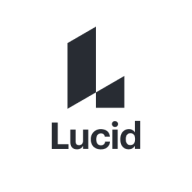

Find out what your peers are saying about Microsoft, Camunda, SAP and others in Business Process Design.


Camunda drives business process automation and AI orchestration, enhancing efficiency and innovation without compromising security and governance. Trusted by major brands like Atlassian, it seamlessly integrates systems and human tasks for impactful digital transformation.
Camunda is renowned for fostering collaboration between business and IT, empowering over 700 organizations across diverse sectors to manage and improve business-critical processes. With its flexible architecture, Camunda supports BPMN, CMMN, and DMN standards, allowing for efficient modeling and smooth integration with environments via REST APIs. This open-source platform offers extensive customization and combines enterprise features such as process history tracking and decision table editing, supporting both technical and non-technical users in achieving efficient automation strategies. While performance and scalability issues exist, especially in the cloud, Camunda remains a top choice for companies like ING and Vodafone.
What are Camunda's standout features?In sectors like banking and government, Camunda's fast prototyping and workflow automation capabilities optimize processes such as client onboarding and investment banking workflows. It enhances social governance tasks, credit flows, and enterprise integration, while also being used in insurance and telecom for automating repetitive tasks and improving efficiency. Organizations utilize Camunda for training and service management, showcasing its versatility across industries.
Our online diagram application makes it easy to sketch and share professional flowchart diagrams. From brainstorming to project management, we support all of your communication needs. That’s why millions of users choose Lucidchart.
We monitor all Business Process Design reviews to prevent fraudulent reviews and keep review quality high. We do not post reviews by company employees or direct competitors. We validate each review for authenticity via cross-reference with LinkedIn, and personal follow-up with the reviewer when necessary.